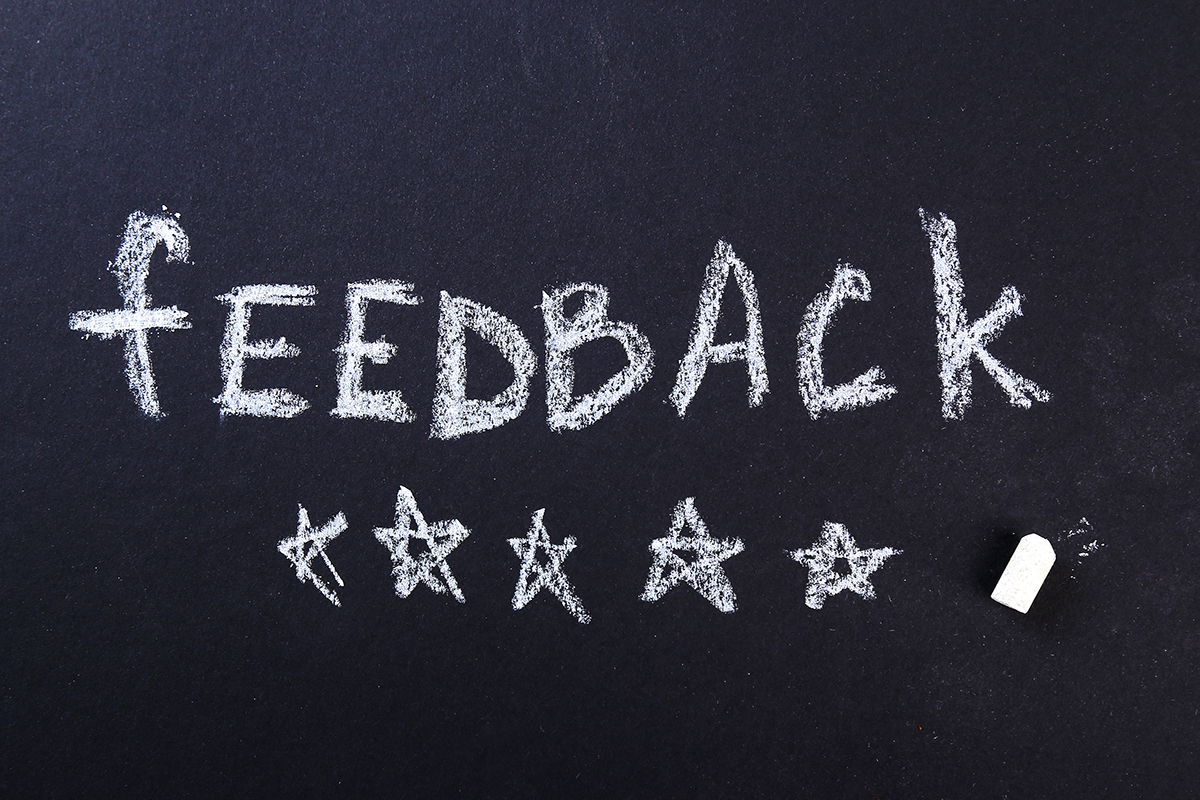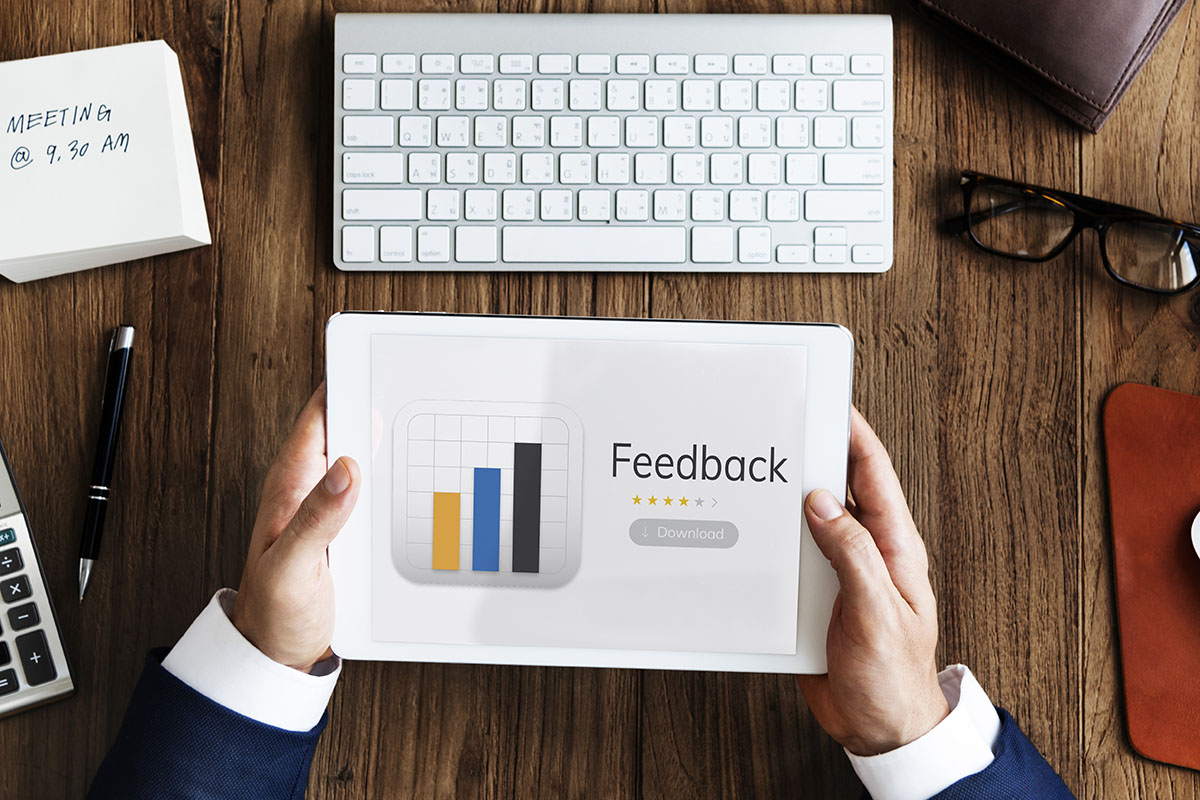A survey report is a specialized form of research report, which contains information about a particular topic. In this case, that topic is usually the opinions of people on a particular situation or product.
It’s important to make a survey report after completing the survey process. It helps in understanding the results better and helps in analyzing further insight with data.
We’ll help you learn how to create an effective survey and then how to analyze your present results and write a proper report that provides value for your readers!
How to write a survey report? That’s what this guide is all about.
Collect feedback with JustFeedback
JustFeedback helps your business increase profits and reduce risk by improving your customer experience
What Is A Survey Report And How To Write It?
A survey report is the most important document of a survey process, as it summarizes the findings of a survey.
The report will be used to inform stakeholders about the survey results.
This document is created by a surveyor who analyzes data and writes it in a structured format. It gives readers an easy way to understand what was done, what was found out, and how they can use this information.
A good example of how these elements are explained in reports:
- What was done? The research question was answered using (methods).
- What did we find out? We found that X percent of respondents agreed with Y statement/question/finding.
Steps For Creating A Survey Report
Step 1. Create A Questionnaire
A survey questionnaire is an instrument that you can use to collect data from your respondents and is considered a prominent sign of conducting a good survey report.
This step consists of a list of questions, which you ask your respondents to answer.
A survey report is made up of the results of this process, so it contains all the answers to the questions in your questionnaire.
In this procedure, we will be going over three things: how to create a questionnaire for your survey report; what types of questions are appropriate for questionnaires; and how to format those questions in order for them to appear correctly.
Step 2. Collect Data / Receive Responses
After you have an idea of what information you want to collect and how much time you have to collect it, it’s time to start the process of gathering data.
Depending on your research question, there are many different ways in which you can collect and present data. Being a researcher, it might be as simple as asking participants about their thoughts on a certain topic or something more complex like gathering sales data from each business in your area.
You should also consider how long it will take for people to respond back with their answers. Are they going to need something like a survey link sent out via email? Or would they rather fill out a questionnaire at home?
In most cases, it’s best not to rush through this step because having too many responses come back late can lead them to be useless (or worse).
Step 3. Analyze And Interpret Data
Analyze the data. When you understand the collected data, you can analyze it. The first step to analyzing your survey results is looking at them. Look at all of your numbers, charts, graphs, and tables.
Take a look at each one individually as well as in comparison with others like it (ex: If there are multiple graphs showing different demographic data points on one graph). This can also be done through an online survey.
Interpret the data. Now that you have analyzed all of your graphs, charts, and tables for yourself, interpret what they mean for you personally or for your organization. This might not be easy so don’t rush this step!
Step 4. Filter Data
Once you’ve filtered the data, you can use it to create charts and graphs to illustrate your findings.
- Filter data based on your survey questions
The more specific your questions are, the better your results will be. The reason is, in your own survey report, you’re using completely analyzed data.
For example, if you ask people if they like chocolate ice cream or vanilla ice cream, then you identify only two options: yes or no.
But if you ask them what their favorite type of ice cream is and give them a list of choices (chocolate and vanilla), then their answers will be more detailed and useful for analysis purposes.
- Filter data based on survey responses
Consider a situation where someone responds “no” to the question “Do you like chocolate?”. If the same person in the past indicated that they would never eat chocolate for whatever reason, then they should be excluded from all chocolate related surveys.
Obviously this example is very specific. Who doesn’t like chocolate after all! But hopefully it illustrates why it’s important to filter who we send surveys to based on past responses.

Tips For Creating An Effective Survey Report
1. Start With An Introduction
Before you start writing your report, it’s important to think about how you want the audience to feel when they read it.
Is your goal to inform them? Or do you want them to be motivated by your results?
Depending on the type of survey, there are many different ways that you could write a conclusion section. If you’re writing a long paper or report (like this one), make sure that the reader is engaged throughout with clear headings and subheadings that make sense for each section and better understanding.
In particular, try not to leave any unanswered questions in their minds as they finish reading yours!
2. Use Visualizations
Effective visualization can help you make sense of demographic data.
It is a great way to show your target audience how they see the results and how they can interpret them.
Visualization helps you make decisions based on what you know about your target audience, their needs, and their preferences.
Visualization makes it easier for you to understand how people are responding, and what decisions they are making or not making based on their responses to questions in an effective survey or poll.
The benefits of using visualizations include:
- Making better decisions;
- Helping others who may be involved in decision-making processes understand data better; and
- Providing a more accurate picture of what customers really think about products or services.
3. Focus On Key Facts First
A report can be a bit overwhelming if you have too much information to sift through. The best way to organize your data is by focusing on the key facts first.
This will make it easier for people who are not familiar with your business or industry to understand what you’re aiming for and how they can benefit from it.
Make sure that all-important findings are included in the report, but don’t include any unnecessary details or information that isn’t needed for understanding where you’re going. Additionally, start from a legit survey platform to generate a good survey report.
4. Categorize Results
To help you make data-driven decisions, it’s important to group the results into categories.
This will allow you to use the results and make recommendations, decisions, changes, and improvements based on the detailed information gathered through your survey.
For example: If you have a loyalty program for your customers to sign up for and receive discounts over time, after surveying them about what they like about your company and services/products, etc., you can categorize their responses into different categories such as “Products offered” or “Service quality” etc.
5. Summarize Your Findings
Once you’ve completed the previous steps, it’s time to summarize your findings.
Summarize the main points of your report in a few sentences and provide an executive summary of your results (i.e., how many people participated, what they had to say).
You can also use this section to provide a summary of any recommendations you made or conclusions you came to based on your data analysis.
6. Integrate Company Branding
Now that you have a well-designed report, it’s time to add some finishing touches.
- You should use the company branding in your report. This includes using the logo, color scheme, fonts, and tagline in your report.
- You can also add contact information for your company such as email address or phone number if you want to make it easy for people who have questions about your product to get in touch with you.
- You should also consider adding social media handles for both business accounts and personal accounts (if any) so that people can connect with you on those platforms as well.

Types Of Survey Report
A survey report is a written document that is prepared after conducting a survey. It is written to summarize the findings of the survey and inform readers about the results of the survey.
Reports can be categorized into three types:
1. Meeting Survey Report
The meeting report is a type of business report that is prepared to provide a summary of the meeting held by the organization.
It is prepared by the meeting organizers and is presented to the participants of the meeting. Its purpose is to show what was discussed in detail during meetings, as well as how decisions were made and approved.
This report can also be used to summarize data from surveys taken during meetings, so it gives readers a sense of what everyone’s opinion was on certain topics at hand, which may not have been expressed outwardly because they were too shy or afraid that their opinions would not be well received by others present at said event (such as work conferences).
The Meeting Reports should begin with an introduction paragraph explaining why such information needs to be reported upon more often than not when talking about this kind
2. Student Survey Report
A student survey report is used to assess the students’ behavior and attitude. It is also used to improve the quality of education, learning environment, teaching and learning process, and management of school/college. It is one of the widely used survey report examples.
Student survey reports can be made by sending a questionnaire to all students or some selected students based on their age group or class level or gender etc., This can also be taken as a good feedback report to further use for improvements.
The information collected from such questionnaires will give us an idea about their perception of different aspects related to their education such as –
- How much do they like to study?
- Are they happy with their teachers?
- Do they feel comfortable in the classroom environment?
The respondents answers will help us in improving our educational system.
3. Global Survey Report
A global survey reporting is one of the long-form survey report examples that is conducted on a large scale to collect data from a large number of people from different regions and countries.
A global survey report is conducted by a market research company, which will ask you questions about your demographic profile, what type of products or services you use, and how much money you spend on these items.
The market research company will then compile all the information provided by participants into one report for companies who want this information.
This type of report can be very useful if you are trying to determine whether there is demand for your product in different countries around the world.
The results may also help show where additional resources should be allocated if there isn’t enough demand within certain regions or countries.
4. IT Leadership Survey Report
An IT leadership survey report is a survey report example that collects information from IT leaders about their organization.
It can be used to evaluate the performance of IT leaders, and measure the success of the IT leadership and improve it, improve IT leadership development.
This report is usually prepared either on a regular basis or whenever there has been a change in leadership or if something significant has happened within the department.
5. Academic Survey Report
Among the survey report examples, an academic survey report is a document that contains the results of a survey. It usually involves a few questions, which are answered by people who have taken part in the survey and it’s generally used to find out more about something.
- So how do you create an academic survey report?
To create an academic survey report, you need to have some basic knowledge of how surveys work, who they’re directed at, and what they should contain.
You also need some writing skills so that you can put together all your findings into a coherent document.
If all this sounds good but is too much for you right now – we’ve got your back! Just keep reading this guide (and don’t forget about our free templates!)
What Are Some Good Topics For Survey Report?
There are many topics that you can cover in a survey report. You can give your suggestions, views, and opinions on certain situations or topics with the help of a survey. Here are some good topics for creating a survey report:
- How do you feel about the new tax laws? (e.g. Do you think that the changes made by the government are good or bad?)
- Do you think it is important to have extra funds saved for emergencies? Why or why not?
- What would be your dream vacation spot? (e.g. Where would you like to go if there were no limitations?)
How To Run A Survey?
A survey is a formal way of collecting information from a group of people. It can be used for market research, market analysis, product development, customer satisfaction, or to analyze data.
Surveys can be used to ask questions about the products and services offered by your company or other companies in your industry to determine what customers like and dislike about them.
The data collected through professional surveys can also be used to determine the effectiveness of advertising campaigns or sales promotions.
When conducting surveys you should always keep in mind that the responses provided are based on the perception of each individual respondent at that particular time and place and not necessarily on facts or reality (i.e. correctness).
How Many Questions Are To Be Included In A Survey Report?
The number of questions to be included in a survey report depends on the purpose of the survey.
If you want to know about target population satisfaction, you need to ask more questions to get more data. This is considered a good practice to adopt in the professional work environment.
There are many factors that determine how many questions should be asked in a survey statement.
For example, if you want to get an accurate representation of your customers’ needs then you need to ask them several questions related to their preferences, requirements, and expectations of your service or product, using a logical survey platform.
Similarly, if you are going to run market research on any topic then it would be better if there were 10-20 open-ended questions along with some multiple-choice questionnaires which will help you in understanding various aspects of your business better by collecting data from different perspectives and angles as well
How To Analyze Survey Reports?
Once you have the results of your survey reports, it’s time to analyze them. This is a crucial step and will help you understand how your surveys are working and what changes need to be made.
- Analyze the results to identify patterns and trends: You can analyze the data in several ways depending on what you’re looking for. If you want to identify any patterns or trends among your respondents, look at their answers to different questions on the same topic.
- Compare the results with previous surveys: Compare this year’s survey results with last year’s so that you can see whether there are any changes over time in how people feel about certain topics or issues (such as customer satisfaction).
What things should I know before conducting a survey for reporting?
Knowing how to conduct a survey is essential if you want to report on survey findings. Here are some things you should know before conducting one:
- Methods you use to collect data
You have a choice between online and offline modes of data collection, but an online survey tend to be more popular among researchers because the surveys can be completed quickly and easily. The process to store and export data becomes more convenient with online data collection. The downside is that they may not be as accurate as those collected offline.
- Fatigue from surveying
Survey fatigue occurs when respondents are asked to complete too many surveys in a row. If this happens, they may become irritated or bored, leading them to give less-than-accurate answers or even abandon the survey altogether. This can lead to inaccuracies in your results.
- Wording of Survey Questions
Before you write a survey report, make sure the questions are clear and easy for respondents to understand. This will increase the accuracy of their answers.
Conclusion
Doing surveys have become a necessity in the modern world. A survey is conducted to collect a particular research objective manner, thoughts, and responses from a certain group of people. They are used for many purposes such as market research, getting academic feedback, and even personal perspectives.
These survey reports will help you make a more accurate and informative report. Surveys provide a lot of information that can be used to make important decisions, therefore, it is important to create a well-written survey report suggested in this article.
If you are planning on creating a survey report, then the tips mentioned above will help you draft an effective one.
